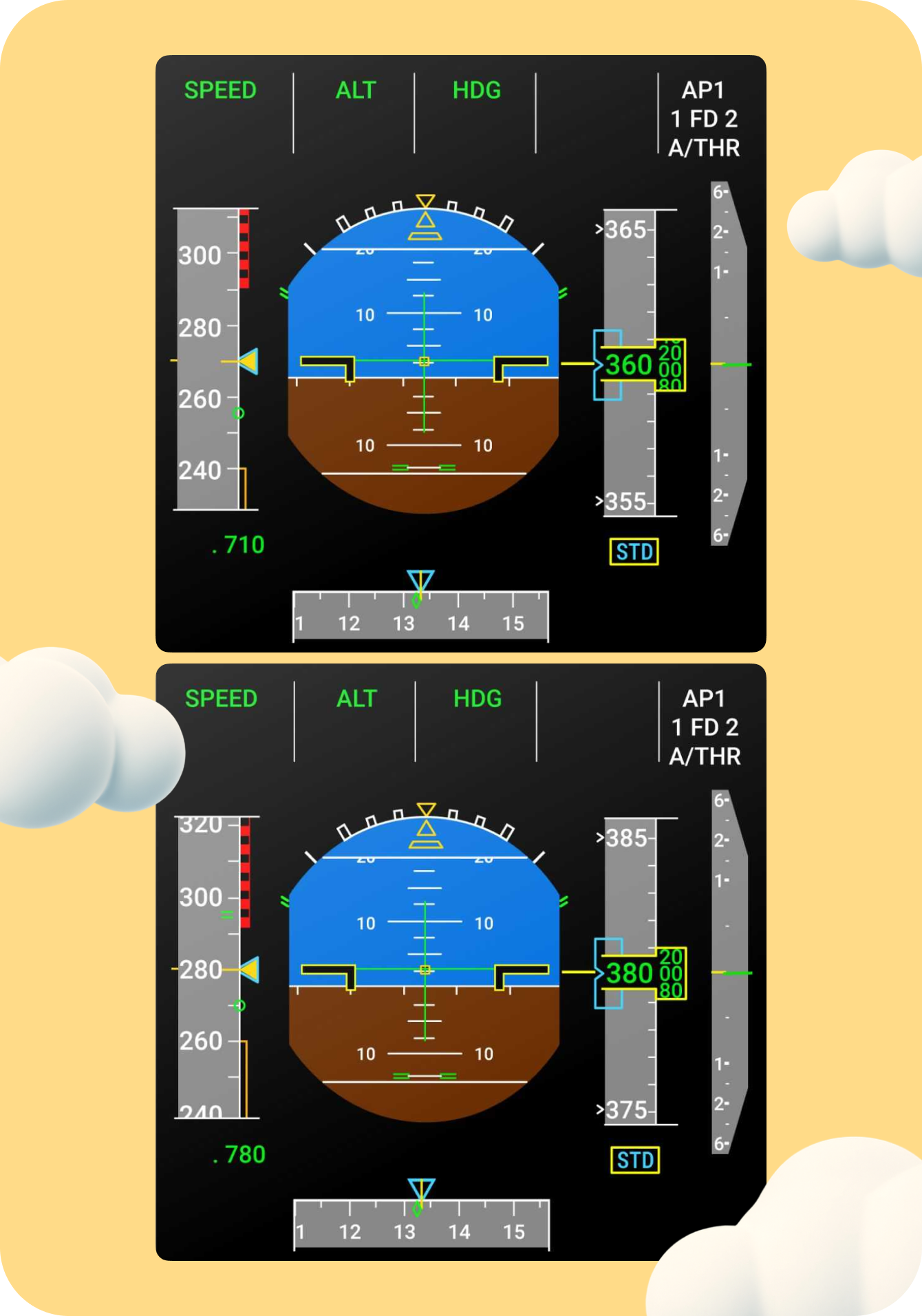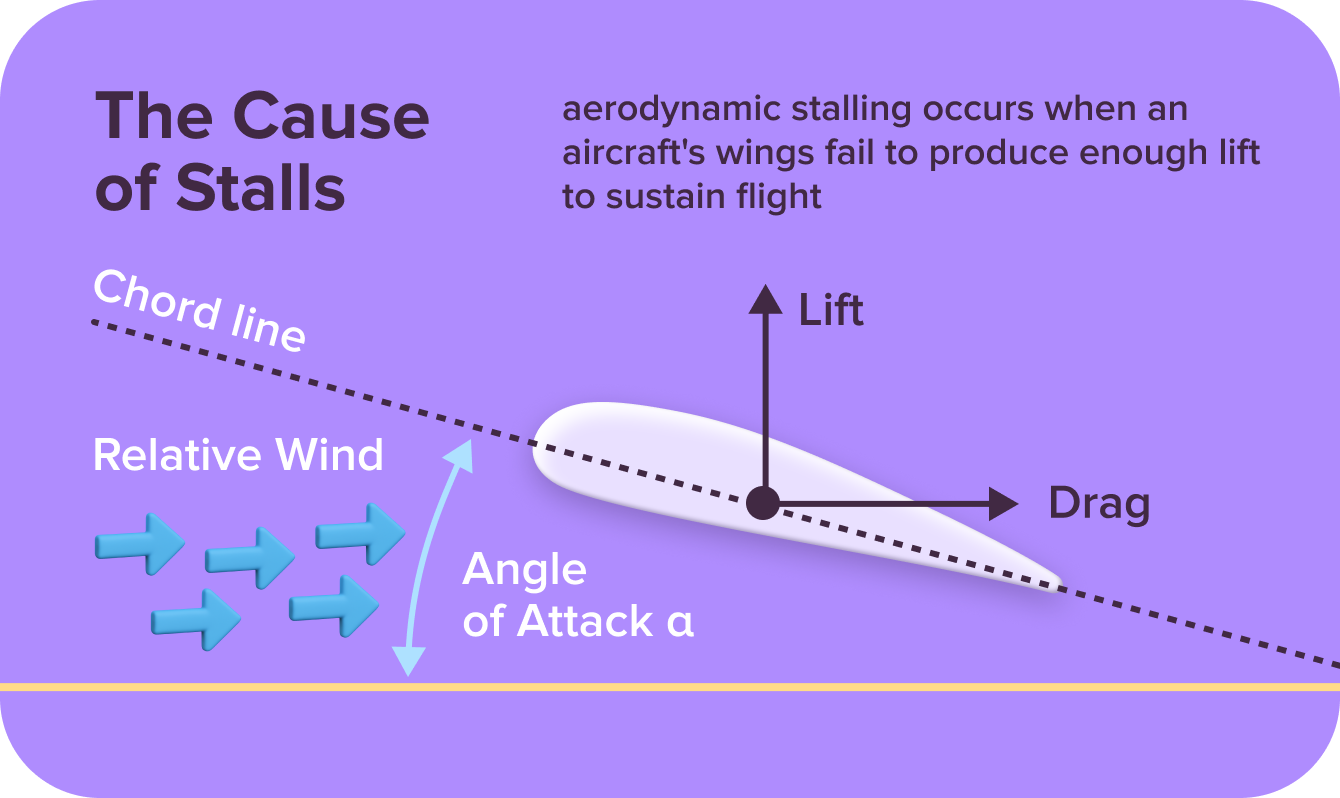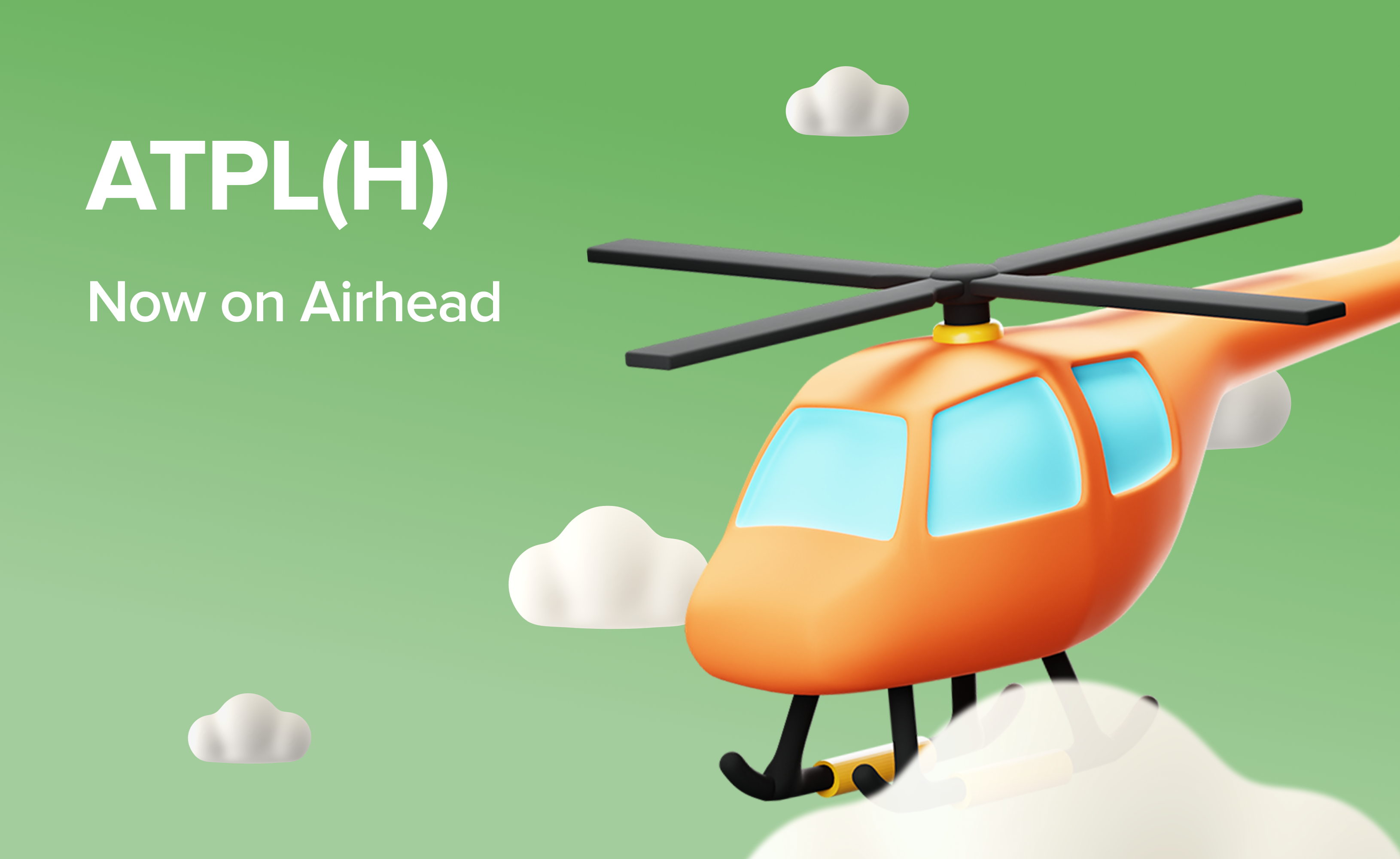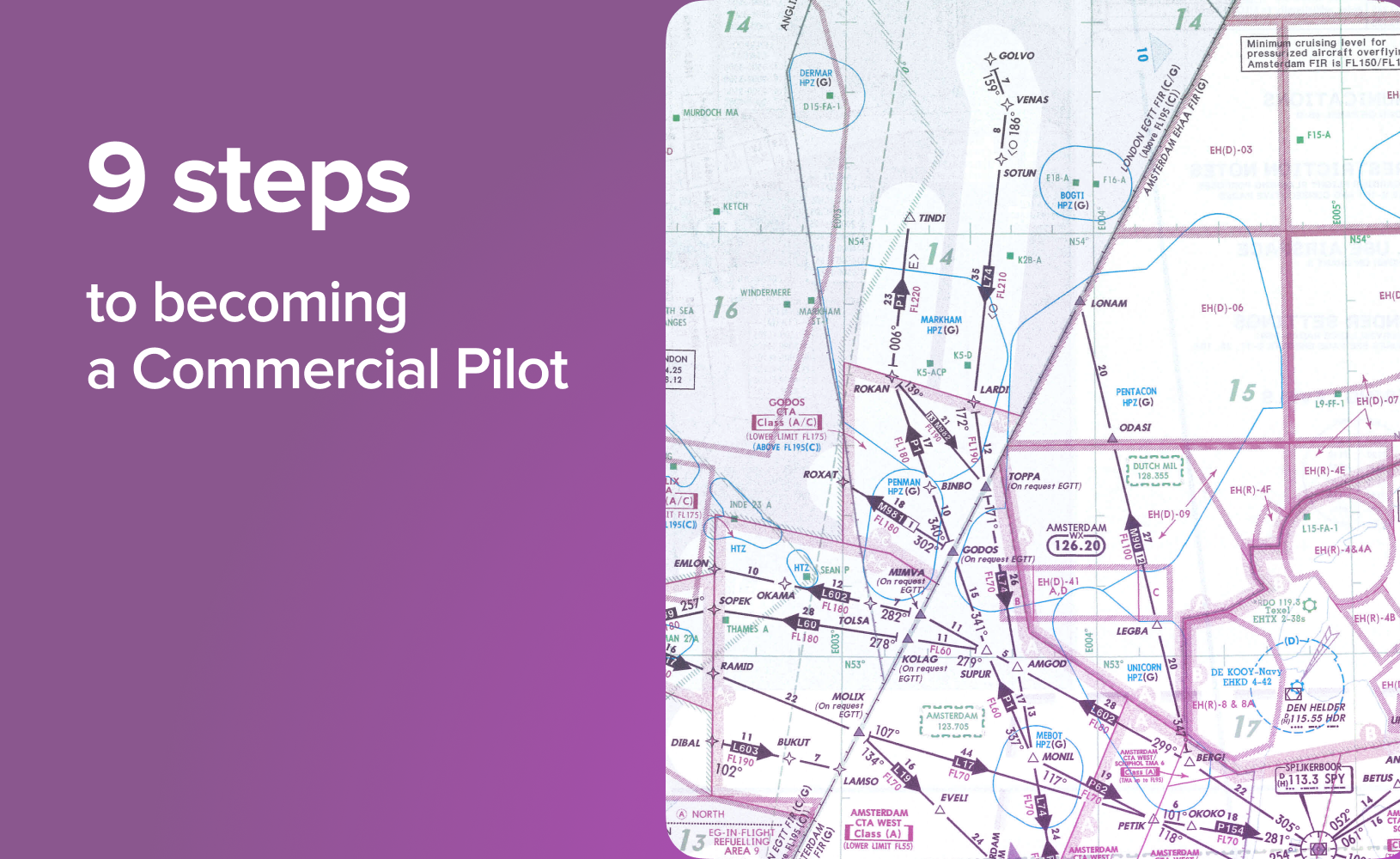Principles of Flight: 5 Latest ATPL Questions Explained

Today, we’re looking at five of the latest Principles of Flight ATPL questions, all recently reported in EASA exams across different authorities. As always, we’ll go step by step through the questions, examine the possible answers, and explain why the correct one makes sense. This way, you’ll build real understanding, not just short-term memory.
You can also follow along with the video version of this walkthrough for a more interactive experience. Let’s get started.
Subscribe to the AirheadATPL YouTube channel and hit the notification bell for weekly ATPL revision videos. Each video helps you tackle the latest challenging questions from all 13 ATPL subjects, straight from recent EASA ATPL exams.
Question 1: Buffet Margins and the Coffin Corner
Question ID AIR-252144: Refer to the figure.
The following two images show the buffet margins of the same aircraft. Aircraft A has a larger gap between the yellow bars than Aircraft B does.

Considering Aircraft B with the smaller gap, what does this indicate about the aircraft’s buffet margin?
AIR-252144 Annex
The aircraft is operating closer to its critical angle of attack
The aircraft is experiencing less turbulence
The aircraft has a higher safety margin
The aircraft is flying at a lower altitude
Correct answer: The aircraft is operating closer to its critical angle of attack
Explanation: The question shows two aircraft with buffet margins on the PFD. Aircraft A has a larger gap, while Aircraft B has a much smaller one.
This is testing your knowledge of the coffin corner:
At high altitudes, low-speed buffet (stall onset) increases because the air is less dense and the wing needs a higher angle of attack to maintain lift.
At the same time, high-speed buffet (Mach buffet) decreases because the local speed of sound drops as you climb higher.
The gap between the two narrows — forming the “coffin corner.”
So, for Aircraft B (flying higher at 38,000 ft vs. 36,000 ft):
The buffet margin is smaller.
The aircraft is closer both to stall (low-speed buffet) and to Mach buffet (high-speed buffet).
The safety margin is reduced, not increased.
It is operating closer to the critical angle of attack.

Question 2: VC – Understanding Design Speeds
Question ID AIR-251724: VC is…
a specially recommended penetration speed for severe turbulence.
the maximum tested airspeed where the aircraft is free from any sign of dynamic pressure overload, flutter and/or control reversal.
a speed selected by the designer and used to assess the strength requirements in cruise.
the highest speed at which sudden full elevator deflection -nose up- can be made without exceeding the design limit load factor.
Correct answer: A speed selected by the designer and used to assess the strength requirements in cruise.
Explanation: VC is the design cruise speed, selected by the aircraft manufacturer for structural strength reasons. During certification, the authorities require the aircraft to be tested up to this speed. The published VMO (maximum operating speed) will not exceed VC.
At VC, the test pilot performs prescribed upset manoeuvres. The highest speed reached in these manoeuvres is called VD (design dive speed). The aircraft must safely reach VD without showing any signs of structural overload.
When flying in turbulence, the recommended speed is VB (turbulence penetration speed), also known as rough air speed.
For the exams, you should clearly understand the key design speeds:
VA – Maneuvering Speed The maximum speed at which you can make full and abrupt control inputs without exceeding the structural load limits. If you go beyond VA, you risk structural failure. At VA, the worst-case outcome is a stall, which is recoverable.
VB – Turbulence Penetration Speed Provides protection against gust loads (tested up to 66 ft/sec). Below VB, the aircraft structure can safely withstand turbulence; above it, the risk of damage increases.
VC – Design Cruise Speed Chosen by designers to ensure the aircraft structure can handle normal cruise operations. A key structural reference point in certification.
VD – Design Dive Speed The maximum speed flown during flight testing to prove that the aircraft can withstand extreme conditions with adequate safety margins.
VNE – Never Exceed Speed Set at 90% of VD. Marked on the airspeed indicator with a red line. Exceeding this speed is prohibited under any circumstances.
Question 3: Effect of Increasing the Number of Propeller Blades
Question ID AIR-251676: What is the effect of increasing the number of blades on a propeller?
It decreases the power absorption of the propeller.
It decreases the drag of the propeller in power-off descent.
It decreases the propeller torque for a given RPM
It increases the overall solidity of the propeller.
Correct answer: It increases the overall solidity of the propeller.
Explanation: Solidity is a measure of how much of the propeller disc is occupied by the blades. It is expressed as the ratio of the total blade area to the disc area.
How can solidity be increased?
By increasing the chord (width) of the blades.
By adding more blades to the propeller.
Effects of increasing solidity:
More blades allow the propeller to absorb more power and generate greater thrust.
Torque and drag also increase, especially noticeable in a power-off descent.
Performance considerations: Up to around six blades, increasing solidity improves efficiency because the propeller disc captures more air, producing more thrust. Beyond that point, efficiency begins to decrease. The airflow from one blade interferes with the next, reducing overall performance.
Exam takeaway: More blades = higher solidity, but efficiency peaks at about six blades.
Question 4: Why Stall Warning Might Not Trigger
Question ID AIR-253490: Which of the following factors might result in the absence of a stall warning on a commercial jet transport aeroplane?
Ice on the tailplane causing boundary layer separation on the stabiliser.
Ice on the wings causing a stall at a lower angle of attack than the normal critical angle of attack.
Icing on the pitot tubes, causing erroneous speed indications and leading to a stall at a higher indicated speed.
Ice on the fuselage, increasing the aeroplane’s mass, and leading to a stall at a higher speed.
Correct answer: Ice on the wings, causing a stall at a lower angle of attack.
Explanation: This question deals with situations where a stall warning may be absent in a commercial jet transport aircraft. The stall warning relies on angle of attack (AoA) sensors calibrated for a clean wing.
When ice accumulates on the wings:
The aerodynamic shape changes, reducing lift.
The critical angle of attack decreases significantly.
The AoA sensors still think the aircraft is within safe limits, but in reality, the stall occurs earlier.
This means the aircraft can stall without triggering a stall warning.
Other options:
Stabiliser icing → causes pitch changes, not immediate stall.
Probe icing → affects pitot/static systems, not stall warning.
Increased mass → raises stall speed, but stall warning would still activate correctly.

Question 5: Wind Shear in the Unstable Speed Region
Question ID AIR-253561: You are flying at constant CAS in the unstable speed region, and encounter a wind shear which changes a headwind into a tailwind. Which statement is correct?
Airspeed decreases because total drag increases.
Airspeed increases because total drag decreases.
The aeroplane will stall due to insufficient lift.
There will be no effect, but extra care should be taken to monitor speed very closely.
Correct answer: Airspeed decreases because total drag increases.
Explanation: Here we’re talking about flying at constant CAS below VMD (minimum drag speed) — the unstable region.
What happens below VMD?
If airspeed decreases, drag increases.
More drag → more speed loss → even more drag.
This creates a vicious cycle that can quickly lead to loss of control unless thrust is increased.
Example — wind shear: A sudden change from headwind to tailwind reduces airspeed. In the unstable region, this loss of speed immediately causes drag to rise. Without corrective thrust, airspeed will continue to decay, risking a stall.
What happens above VMD?
The opposite: if speed decreases, drag decreases too.
The aircraft naturally stabilises and returns to equilibrium.
Exam takeaway: Below VMD, speed is unstable — a drop in speed causes drag to rise and speed to keep falling.
Airhead's Takeaway
These five questions highlight why Principles of Flight is more than memorisation.
Understanding buffet margins helps you grasp why high-altitude flight is so delicate.
Knowing design speeds prepares you for structural limits and turbulence.
Propeller blade dynamics link directly to efficiency in modern aircraft.
Stall warning questions remind you that icing is not just about performance — it can compromise safety systems.
And stability around VMD illustrates why certain speed regions are dangerous in wind shear.
The Airhead ATPL question bank is a great way to practice these scenarios, since you’ll see similar logic tested in real EASA exams.
Practise Principles of Flight questions with Airhead ATPL Question Bank.
Good luck with your studies — and keep training both memory and reasoning.
















































